Diving into research at the EIROforum teacher school Inspire article
Does school feel a long way from modern science? Sonia Furtado Neves explains how 30 teachers recently experienced the thrill of cutting-edge research.
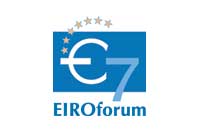
“See, everybody’s trying to discuss how to take this back and apply it at school,” said Alan Glaze, pointing to an animated huddle at the next lab bench. Alan was one of 30 European science teachers attending the EIROforum teacher school in Grenoble, France, in October 2011.

Image courtesy of Artechnique
Selected from a pool of 200 candidates, these teachers spent four days exploring how electrons, neutrons and X-rays are providing exciting new insights into fields from palaeontology to magnetism.
Mathematics. Chemistry. Biology. Physics. In school, the sciences are often approached as discrete entities, but in practice these subjects overlap and intertwine. Under the title ‘The physics and chemistry of life’, a combination of lectures and practical tutorials enabled the teachers to experience that interdisciplinarity first-hand, imbibing the atmosphere of cutting-edge research and interacting with researchers.
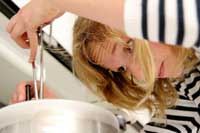
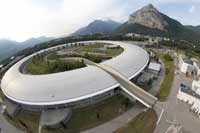
storage ring building of ESRF
Image courtesy of P Ginter /
ESRF
In this school, the teachers did more than just visit the state-of-the-art facilities of three of the EIROforumw1 members: the European Synchrotron Radiation Facility (ESRF)w2, the European Molecular Biology Laboratory (EMBL)w3 and the Institut Laue-Langevin (ILL)w4.
At ESRF beamlines, they learned how to prepare protein crystals and explored the computational steps necessary to go from raw data to a three-dimensional model of protein structure, whereas at EMBL they observed a ribosome under a cryo-electron microscope. At ILL, they were able to see for themselves that neutrons sometimes behave like a wave (when they diffract) and sometimes like particles (when they hit a detector).
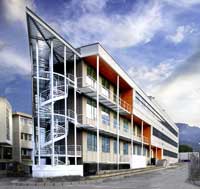
Partnership for Structural
Biology, a joint activity of
EMBL, ESRF and ILL
Image courtesy of P Ginter /
ESRF
The lectures, which provided a context for the practical sessions as well as additional examples to share with their students, were also welcomed.
“It was a fantastic way for me to get up-to-date scientific knowledge, too,” says Lidia Minza, who teaches chemistry in Romania. Reawakening the teachers’ excitement about the process of scientific research was a central aim of the course.
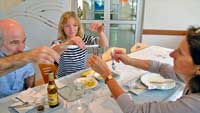
Lidia, Alan and the other 28 teachers were also enthusiastic at the prospect of swapping tips and experience with fellow practitioners, and discussing science education in their countries and in Europe in general – an exchange made possible thanks to the support from the course organiser, EIROforum, which covered participants’ travel and accommodation costs.
And after the course? The aim is that the teachers will spread the insights gained in these four days not only to their current students but also to future classes and colleagues, and ultimately develop their own ways of applying this knowledge in the classroom. Alan intends to do just that: “I’ll be going back to make class plans from some of this.”
Web References
- w1 – EIROforum is a collaboration between eight of Europe’s largest inter-governmental scientific research organisations. It combines the resources, facilities and expertise of its member organisations to support European science in reaching its full potential. One of its activities is to publish Science in School. To learn more, see: www.eiroforum.org
- w2 – ESRF, which shares a campus in Grenoble, France, with EMBL and ILL, operates the most powerful synchrotron radiation source in Europe. To learn more, see: www.esrf.eu
- w3 – EMBL is Europe’s leading laboratory for basic research in molecular biology, with its headquarters in Heidelberg, Germany, and an outstation in Grenoble, France. To learn more, see: www.embl.org
- w4 – ILL is an international research centre at the leading edge of neutron science and technology, based in Grenoble, France. To learn more, see: www.ill.eu
Resources
- Information on the tutorials and additional resources are available online at: http://tinyurl.com/eiroschool
- A short video about the course is available on YouTube (www.youtube.com; search for ‘Teachers school 2011, Grenoble’) or via the direct link: http://tinyurl.com/89k5yds
Institutions






